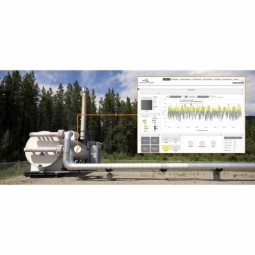ThingWorx
一个平台 - 无限可能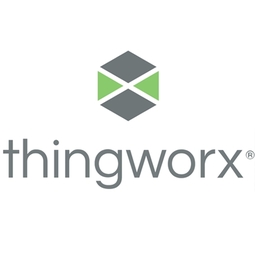
概述
|
总部
美国
|
成立年份
2009
|
公司类型
上市公司
|
收入
$1-10b
|
|
员工人数
1,001 - 10,000
|
网站
|
股票行情
NASDAQ: PTC
|
推特句柄
|
公司介绍
ThingWorx 物联网技术平台。一个平台。无限可能。 ThingWorx 是唯一可让创新者快速开发和部署物联网智能互联解决方案的企业级技术平台。为物联网构建快速连接和开发工具使开发人员能够以前所未有的速度快速创建、测试和部署解决方案。构建平台的智能集成功能使开发人员能够以其他平台的一小部分时间创建功能更丰富的解决方案。为企业构建开发人员可以快速轻松地创建可扩展、安全并满足最大型企业需求的 IoT 解决方案。
物联网解决方案
ThingWorx 技术平台是为物联网从头开始构建的。它包含最完整的集成物联网特定开发工具和可用功能,提供业界最深入的功能能力。 ThingWorx 使开发和交付强大的 IoT 解决方案变得容易,从而带来变革性的商业价值。 ThingWorx 专为希望快速向市场提供企业就绪物联网解决方案的创新者而设计,得到市场上最强大的以物联网为重点的生态系统和业界唯一的现成扩展物联网市场的支持。 ThingWorx 是专门构建的物联网平台,可以为智能互联世界快速创建完整的应用程序。其独特的事物模型框架使其能够与其他技术无缝集成,包括增强现实(ThingWorx Studio) 和工业连接 (Kepware)。
主要客户
DeviceLynk、Devicify、LumenData、Vantron、Sysmex、IOTATOI
母公司
物联网应用简介
ThingWorx 是平台即服务 (paas), 应用基础设施与中间件, 分析与建模, 功能应用, 网络与连接, 传感器, 和 基础设施即服务 (iaas)等工业物联网科技方面的供应商。同时致力于农业, 汽车, 电池, 建筑与基础设施, 电子产品, 设备与机械, 医疗保健和医院, 电信, 和 运输等行业。
技术栈
ThingWorx的技术栈描绘了ThingWorx在平台即服务 (paas), 应用基础设施与中间件, 分析与建模, 功能应用, 网络与连接, 传感器, 和 基础设施即服务 (iaas)等物联网技术方面的实践。
-
设备层
-
边缘层
-
云层
-
应用层
-
配套技术
技术能力:
无
弱
中等
强

Supplier missing?
Start adding your own!
Register with your work email and create a new supplier profile for your business.
实例探究.
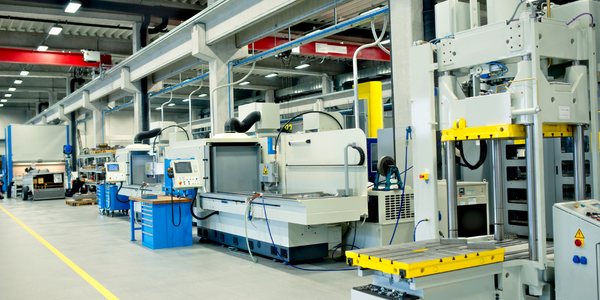
Case Study
Complex Discrete Manufacturing with ThingWorx Analytics
ABC faced two major issues when utilizing the data collected. One is the size, complexity, and disparity of the data collected would take lot of man-hours to process and evaluate. Two is real-time data cannot be put into use due to the nature of data science analysis.
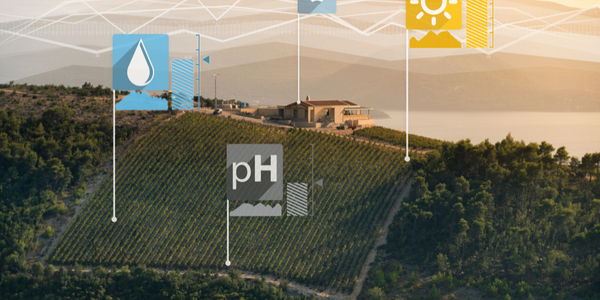
Case Study
Intelligent Farming with ThingWorx Analytics
Z Farms was facing three challenges: costly irrigation systems with water as a limited resource, narrow optimal ranges of soil moisture for growth with difficult maintenance and farm operators could not simply turn on irrigation systems like a faucet.

Case Study
Data Gathering Solution for Joy Global
Joy Global's existing business processes required customers to work through an unstable legacy system to collect mass volumes of data. With inadequate processes and tools, field level analytics were not sufficient to properly inform business decisions.

Case Study
Thingworx Helps EET Monitor Real-Time Energy Savings
Embedded Energy Technology (EET) wanted to build a dashboard for their customers to visualize the data analytics for the stream systems. They wanted the readings collected from the sensors to provide a complete picture of what is happening inside the component, and are displayed in a Web Portal that analyzes and presents the data in a concise format. The dashboard interface will also let customers set up email and text message alerts to be triggered when temperatures of the sensors customer select fall outside of the range they set. Summary reports are emailed monthly that highlight total energy savings, component health and month-over-month / year-over-year comparisons.

Case Study
Splunk Partnership Ties Together Big Data & IoT Services
Splunk was faced with the need to meet emerging customer demands for interfacing IoT projects to its suite of services. The company required an IoT partner that would be able to easily and quickly integrate with its Splunk Enterprise platform, rather than allocating development resources and time to building out an IoT interface and application platform.

Case Study
Use IoT to Improve Healthcare Business Outcomes
Before developing an IoT solution, ICURO hit a major roadblock with its healthcare platform. Limited data sharing between healthcare providers and insurance companies impeded effective communication, resulting in frequent duplication of efforts and making it difficult for each entity to deliver better care while maintaining reasonable costs. ICURO wanted to resolve these data sharing issues, they started developing tools and systems that connect products in meaningful ways, enabling both entities to collaborate more effectively.

Case Study
LumenData Delivers Real-time Predictive Analytics through IoT
In 2013, LumenData found itself in need of adding new real-time predictive analytics capabilities to its suite of services. To meet this need, LumenData acquired a state-of-the-art streaming data, capture and real-time predictive analytics company. This solved the pure predictive analytics end, but left LumenData with a need to be able to build IoT-targeted services.From an IoT perspective, LumenData was still missing the means to create suitable applications and dashboards that would make it easy for its customers to effortlessly make sense of whatever predictive analysis they might require.

Case Study
Smart, Connected Applications Drive IoT Road Side Safety
All Traffic Solutions needed to reduce software complexity so that they could quickly and effectively build out and enhance smart, connected applications without the need to develop their own backend infrastructure and development platform. Ted Graef, All Traffic Solution’s president, emphasizes that it is no longer enough for the company to deliver the best hardware; their hardware must become part of a larger ecosystem that is centered on automating all related business processes and evolving them into a simple-to-use suite of real-time, software-driven services. All Traffic Solutions took a significant step in its connected services evolution when the company decided to include standardized wireless capabilities in all of its products. The move required the company to its hardware costs, yet the belief was - and the reality turned out to be - that their customers would quickly be able to make up for the additional costs through significant improvements in workforce and customer service efficiency. The bold stroke, however, was not the conversion to wireless hardware. Rather, it was in recognizing that to be successful within a rapidly evolving mobile and wireless world, All Traffic Solutions had to also significantly enhance its software capabilities. Graef says the company understood that it had to deliver software that would provide valuable services, and make it easy for its customers to promptly make sense of the real-time data and alerts that would be transmitted and collected.

Case Study
Smart, Connected Applications Maximize Agricultural Business Performance
OnFarm needed to move quickly to capitalize on a significant "smart agriculture" opportunity to build connected applications and dashboards that captured and monitored sensors in the field and provided actionable data back to their customers. The overall solution OnFarm determined necessary was a set of "dashboard-driven connected services utilizing an IoT backend" that would accomplish several key things: • Easily collect data from incompatible sensors via wireless networks • Provide a means to integrate, analyze, and correlate different data sets of information into easily-understood and easy-to-customize reports leading to specific actionable outcomes • Manage end-user permissions, distribute reports and business intelligence through a customizable Web interface that would include dashboards, allowing custom organization of data applicable to the business employing OnFarm's suite of services

Case Study
Leveraging the IoT to Gain a Competitive Edge in International Competition
Many large manufacturers in and outside Japan are competing for larger market share in the same space, expecting a growing demand for projectors in the areas of entertainment, which requires glamor and strong visual performance as well as digital signage that can attract people’s attention. “It is becoming more and more difficult to differentiate ourselves with stand-alone hardware products,” says Kazuyuki Kitagawa, Director of Service & Support at Panasonic AVC Networks. “In order for Panasonic to grow market share and overall business, it is essential for us to develop solutions that deliver significant added value.” Panasonic believes projection failure and quality deterioration should never happen. This is what and has driven them to make their projectors IoT-enabled. More specifically, Panasonic has developed a system that collects data from projectors, visualizes detailed operational statuses, and predicts issues and address them before failure occurs. Their projectors are embedded with a variety of sensors that measure power supply, voltage, video input/ output signals, intake/exhaust air temperatures, cooling fan operations, and light bulb operating time. These sensors have been used to make the projector more intelligent, automatically suspending operation when the temperature rises excessively, and automatically switching light bulbs. Although this was a great first step, Panasonic projectors were still not equipped with any capability to send the data over a network.
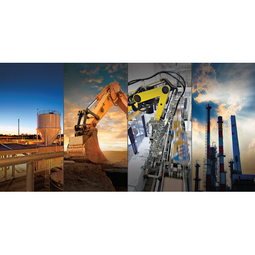
Case Study
Delivers Seamless Scalability to IOTATOI
IOTATOI is a division of Power Agent Systems that has developed an edge server called the Universal Monitoring System (UMS). IOTATOI is using UMS as an edge tier data collector to monitor backup battery arrays in manufacturing, mines, and chemical plants. This experience with battery backups led IOTATOI to expand the system to any condition that can be monitored by sensors such as vibration, heat, temperature, and flow. IOTATOI found they needed to move from their original middleware to something that would allow greater scalability and to also present information in a much broader way allowing them to dynamically look at the information and perform benchmarking analysis, feeding the data into analytics engines and creating a much more actionable view.
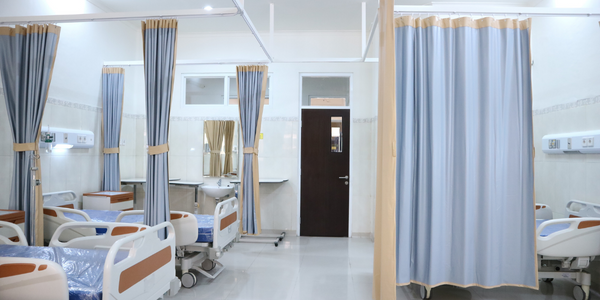
Case Study
Reducing the Rate of Readmissions
The client had limited or inefficient integration of its data sources, which made it difficult to see patients through a longitudinal lens. The client was, however, uniquely positioned to leverage the expansive patient data contained within its network of care, and set out to do so in 2012. Specifically, they wanted to improve the outcomes of patients with Ischemic Heart Disease (IHD) through improved care management with goals of reducing readmission rates, better managing patient cholesterol levels, and better managing patient blood pressure. Specifically, the regional healthcare provider was interested in implementing a machine learning platform, that quickly automates complex analytical processes and integrates powerful information into existing applications and portals.

Case Study
Delivers Business Differentiation to Vantron
Taking advantage of the fast growth of China and the growing demands in embedded computer systems, Vantron technology was established in 2002 by Silicon Valley professionals and headquartered in Chengdu, China. In addition to readyto-run low-power embedded systems, Vantron also provides assistance in application software development, tailoring its embedded systems based on customers’ requirements, and offering turn-key manufacturing services. With customers in industries such as healthcare, heavy equipment, vehicle tracking and telematics, looking for customized solutions, Vantron saw more and more customers looking for interconnectivity through the cloud so that they could access and interact with their equipment remotely

Case Study
ThingWorx Delivers Business Transformation to Sysmex
With a mature business comprising connected field instruments for remote monitoring, Sysmex realized that the next step in order to transform their business would be to unlock more value from their data. The only way they could outpace their competitors would be to deliver higher quality customer service and improve their internal operational efficiency.
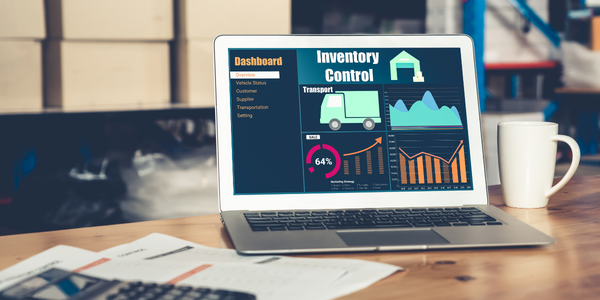
Case Study
Springpath Gains Real-Time Intelligence and Improves Operational Efficiencies
As the HCI market has grown increasingly crowded, Springpath sought to differentiate itself by providing enhanced serviceability to its customers. But it was lacking in its ability to provide fast customer issue resolution for both hardware and software components and in its ability to get meaningful, real-time intelligence from data. Springpath needed to create better operational efficiencies for its support organization. To better service its customers, Springpath would need a solution to resolve customer issues faster while collecting real-time customer data from systems to extract better insights for both internal support teams and end customers alike. Building a solution would require quick ingest and parsing of data – which was at the time often sent in the form of complex log files – and the ability to present it as actionable information. Further, a solution would need to enable support engineers to provide quick issue resolution to minimize downtime. Ideally, Springpath wanted customers to get full visibility into their own systems – and thereby be able to perform timely maintenance tasks – with the goal of maximizing uptime and ensuring optimal system performance. In addition, a solution should integrate with their issue management system, Salesforce.com Service Portal, for easy access for both the in-house support team and end-customers. “Offering world-class Customer Service in the IoT era requires a comprehensive and scalable Analytics platform that is well-integrated with an existing Support workflow,” says Brett Flinchum, VP of Global Customer Success at Springpath.

Case Study
Furtwangen University develops “IoT Walker” and “IoT Wheelchair” using PTC
Recent studies have found that patients return to the hospital at an alarmingly high rate among those who are hospitalized for heart failure, almost one in four are re-hospitalized within 30 days. Such a focus has led to novel approaches to improve patient care and reduce the need for re-hospitalization. Many of these strategies depend on technologies that employ remote patient monitoring (RPM), using the Internet of Things (IoT) and cloud computing, so that their health care team can track their progress without needing them to come to the office. At the Hochschule Furtwangen University (HFU) in Germany, students across multiple disciplines are working to develop this RPM technology into mechanical devices to aid in monitoring patients remotely. Their idea is to utilize the Internet of Things to develop “smart” wheelchairs and walkers that will transmit patient information to a dashboard developed in PTC’s ThingWorx to monitor various parameters and develop alarms specific to each patient. Achim Bumüller, Senior Assistant in the Mechanical and Medical Engineering Department, is managing the project along with five other faculty members dedicated to each discipline such as electronics, informatics, and mechanical engineering. “Since our university is located in the Black Forest of Germany in Baden-Württemberg, the project was originally developed due to the need for remote monitoring in the small villages that are 20-30 kilometers from their nearest doctor or hospital; however, the target has grown to include the necessity of monitoring patients inside a hospital, nursing home or other areas,” states Bumüller.
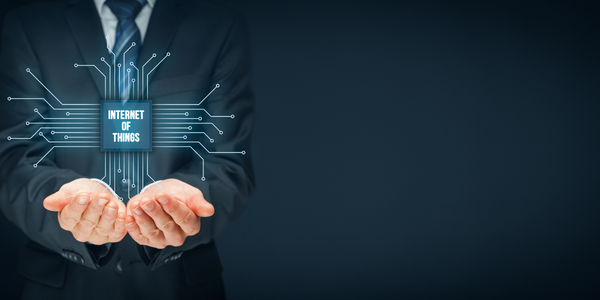
Case Study
TU Darmstadt students make packing smart with ThingWorx
An Advanced Design Project toward IoT was open to a handful ofundergraduate students in TU Darmstadt from various backgrounds. The team’s goal was to develop an IoT solution by semester’s end.Based on their personal experience and the survey results—which told them 85% of people had forgotten to pack something important on a trip—they decided to apply the IoT to the world of travel. Armed with ThingWorx and PTC University eLearning Libraries, they began to develop the project idea and scope.

Case Study
University Duisburg Launches NectOne for IoT Research
In order for the IoT to become fully operationalized, system integration of devices and data with existing businesses systems and processes is vital. In reality, many manufacturing companies like NectOne® with individual systems often find it very difficult to build and use intelligent structures between their systems. Many of the data sources as well as connected systems may be external to the business. This systems integration work can be complex and difficult to manage, but is vital to achieving business objectives. The final goal is to deliver cloud base production control.

Case Study
Devicify – State-of-the-Art Internet of Things Business Transformation
Devicify required a means to quickly build "connected IoT apps” without building a connected applications platform themselves, an expensive and time consuming option.There is a need for Devicify's Connected Products Management (CPM) product to create agile development environments for both technical and business users within a given company. Johnson notes that speeding up the software development process is critical, but the larger value is in combining this with agility in adapting processes that support new business services. Johnson suggests that the resulting new strategic differentiators are what will drive business transformation within the IoT space.Business users and customers stand to gain tremendously from the effective use of Devicify CPM because the technical users are able to easily and quickly develop the software needed to create full end to end solutions. Devicify specifically engaged with ThingWorx so that these technical users could easily connect the edge devices and end points established by the connected products themselves to the business processes and applications they fed into to create the innovative business services that ultimately serve as strategic business differentiators.
合作伙伴.
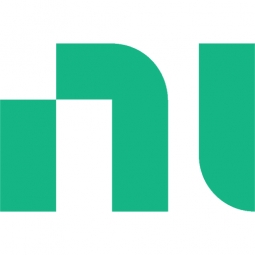
Supplier
NI
NI provides powerful, flexible technology solutions that accelerate productivity and drive rapid innovation. From daily tasks to grand challenges, NI helps engineers and scientists overcome complexity to exceed even their own expectations. Customers in nearly every industry―from healthcare and automotive to consumer electronics and particle physics―use NI's integrated hardware and software platform to improve our world.
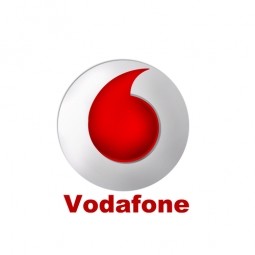
Supplier
Vodafone
Vodafone is a British multinational telecommunications company, has its headquarters in London and with its registered office in Newbury, Berkshire.Among mobile operator groups globally, Vodafone ranked fifth by revenue and second (behind China Mobile) in the number of connections (435.9 million) as of 2014.
---nyse--hpe_1.jpg)
Supplier
Hewlett Packard Enterprise (HPE)
Hewlett Packard Enterprise or HPE (formerly HP) makes IT environments more efficient, productive and secure, enabling fast, flexible responses to a rapidly changing competitive landscape. They enable organizations to act quickly on ideas by delivering infrastructure that can be easily composed and recomposed to meet shifting demands, so they can lead in today’s marketplace of disruptive innovation. Year founded: 2015 (1939) Revenue: $53.0 billion (2014) NYSE: HPE
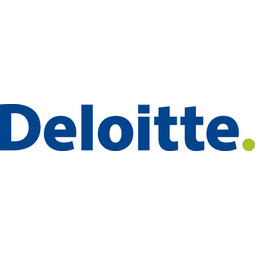
Supplier
Deloitte LLP
Deloitte drives progress. Deloitte around the world helps clients become leaders wherever they choose to compete. Deloitte invests in outstanding people of diverse talents and backgrounds and empowers them to achieve more than they could elsewhere. Deloitte has more than 220,000 professionals at member firms delivering services in audit, tax, consulting, financial advisory, risk management, and related services in more than 150 countries and territories. Year Founded : 1845








